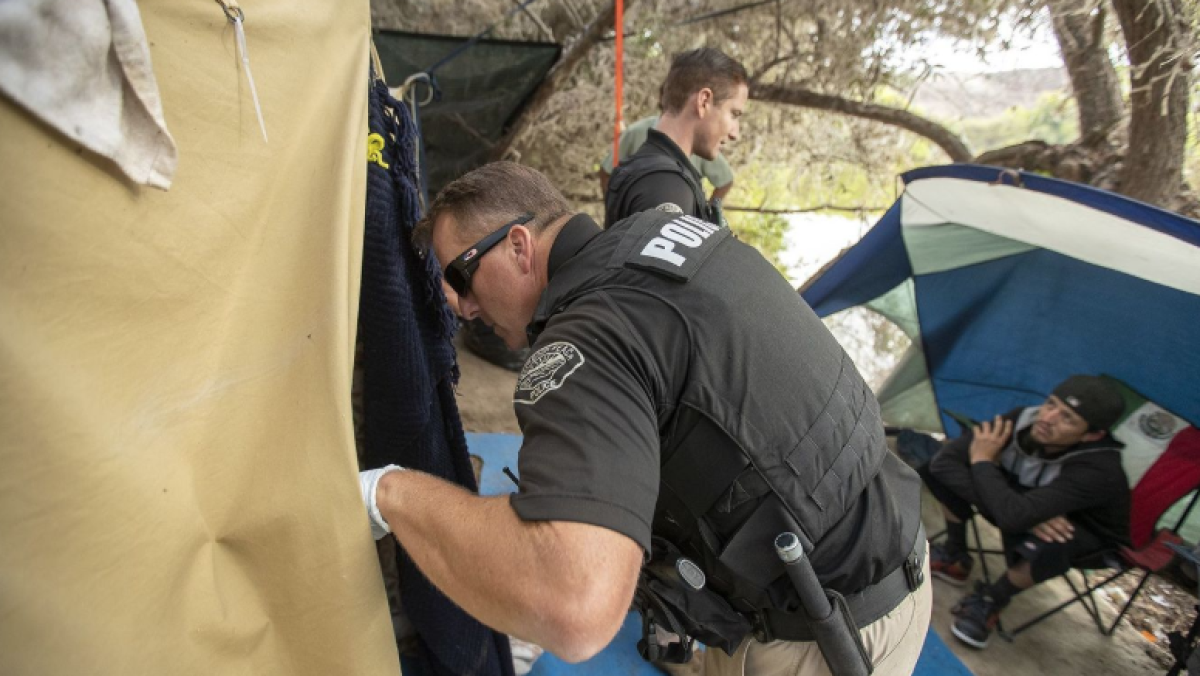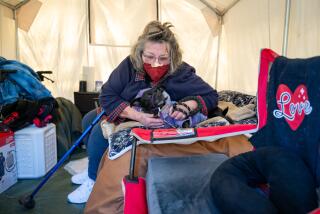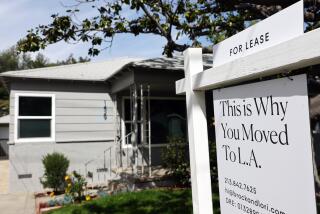As O.C. struggles with homeless crisis, plans for two shelters stall amid money woes

Despite an urgency to address Orange County’s growing homeless population, a plan to expand two shelters in Midway City is at a standstill as officials seek funding for the project.
The plan is a partnership among Huntington Beach, Westminster, the county and American Family Housing, a nonprofit that provides housing and other services to the homeless. The proposal would add 55 beds to the Midway City shelters, which have a total of 20.
Officials have declined to specify the shelters’ location, and it isn’t clear how much money the cities and the county would contribute to the project.
The shelter would provide much-needed housing for the homeless in the Huntington Beach area, where a special task force of police is trying to deal with homeless encampments as they crop up.
Orange County cities are struggling to figure out how to address the homeless issue after U.S. District Judge David Carter required cities in April to identify potential shelter sites after a county proposal for temporary ones in Irvine, Laguna Niguel and Huntington Beach was scrapped amid protests from residents and city leaders.
Carter is presiding over a lawsuit filed in January by homeless advocates who sought to halt the removal of an encampment along the Santa Ana River trail. The river was a prime spot for homeless camps, but advocates say the sweep left some camp dwellers with nowhere to go.
Huntington Beach officials have said the City Council would have to vote on the plan before it moves forward. A council study session on homelessness is tentatively scheduled for Oct. 15.
The Huntington Beach task force, which started about three years ago, is trying to determine through trial and error the best ways to help homeless people. The task force includes outreach coordinator Cathy Lukehart, two full-time police officers and four case managers.
The growing homeless population, Lukehart said, makes it difficult to formulate immediate solutions when homeless people often are dealing with mental health and addiction issues.
The city partners with several nonprofits across the county and at times receives free assistance from facilities that handle such matters. People and churches also give money that covers expenses related to helping the homeless, such as bus passes. In two cases, donations helped people with a rent payment, Lukehart said.
“We try really hard to not put Band-Aids on things,” she said. “We try to put people in situations to help make a meaningful change.”
Officers Gabe Ricci and Daniel Chichester of the Homeless Task Force are on the front lines. Chances are, Lukehart said, a homeless person will know Ricci, a veteran of the task force, and go to him when he or she is ready to ask for help.
On Wednesday, Ricci and Chichester visited a homeless encampment near homes off Ellis Avenue and woods near Sully Miller Lake. They said they had received complaints from residents for two months about homeless people gathering on a makeshift trail toward the lake.
Several tents stretching about half a mile were surrounded by debris. About eight people were in the area that morning, most of whom had already crossed paths with the officers.
Chichester approached Rigoberto Espinosa, 36, who sat on a beach chair adorned with a Mexican flag.
“Why are you still on the streets? We’ve offered you help before, correct?” Chichester asked.
Espinosa confirmed in an interview that he had been offered help and was directed to a shelter in Santa Ana. But the location prioritized nearby residents, he said in Spanish. He said he was discouraged and returned to Huntington Beach, where his son lives.
One person Wednesday requested help to return to Hemet. The rest were told to find shelter elsewhere but were given business cards to contact Ricci or Chichester for help.
Officers estimate 250 to 400 people are living on the streets in Huntington Beach, with 500 living in cars.
Officials can do only so much until a person decides to get help, Ricci said.
The task force is expected to have housed or relocated 226 homeless people by October, Lukehart said.
Candice, a 36-year-old Huntington Beach resident, lived in her car for two years until she received help from the task force. She asked that her last name not be used because she isn’t ready for her colleagues at work to learn about her past.
Candice said she had her own business but hit rock bottom after returning to Huntington Beach from Big Bear and experiencing the price difference of living near the coast. She said she tried living with her mother in a senior housing community but wasn’t allowed to stay there with her two children.
Candice said her brother took in her children while she lived in her car with her husband. Then she met Ricci.
The task force connected her with Mercy House, a nonprofit that helped her with rent and inspired her to develop new habits and turn her life around. Candice has been employed and paying rent without help since March. She credits the task force’s efforts with “giving us our life back.”
“I don’t feel like I’ve made it yet,” she said. “I’ve got a long road to go. I still live dollar to dollar every day, but that’s only because I pay my bills. I’m a productive member of society, my two children are fed and I don’t waste my money on [things] I don’t need today.”
More to Read
Start your day right
Sign up for Essential California for news, features and recommendations from the L.A. Times and beyond in your inbox six days a week.
You may occasionally receive promotional content from the Los Angeles Times.







